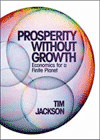Development of Commercial Local Area Resource and Emissions Modelling
Overall aims
Through bringing together various datasets and methods, this project develops a framework to generate comprehensive greenhouse gas (GHG) emissions, waste and water use estimates for individual and all businesses of a sector in an area (from two different perspectives) which otherwise may not exist or be reported.
Context
Climate change, water scarcity and waste management are three key issues that pose tough challenges to UK sustainability. Comparable and transparent accounting and reporting of GHGs, waste and water use are currently missing for many businesses. These missing data are required in order to understand impacts, develop targets, prioritise actions and aid infrastructure planning at a local level.
Research questions and methods
The primary research question is: can a framework be developed that can generate estimates of the direct and indirect GHG emissions, waste and water use for individual business and all businesses with a specific sector and defined area? To achieve this, the project applies a range of environmental and economic datasets using single imputation methods, and environmental input-output methodology. The framework developed was termed the Commercial Local Area Resource and Emissions (CLARE) model. CLARE has two modules CLARE-direct and CLARE-indirect. CLARE is applied to the case study of Hospitality and Food retail businesses in Southampton. Where appropriate, uncertainties and sensitivities associated with the use of the framework are assessed, in addition to whether the assumptions used in direct emissions and water use estimation are actually an improvement on previous frameworks.
Results
Results demonstrate the application of a new model to estimate the GHGs, waste and water use for all Hospitality and Food retail businesses in Southampton Unitary Authority. The ability to look at the emissions and water use for individual postcode districts, postcode sectors, businesses and even individual products is demonstrated and is of use in environmental accounting and a range of planning and strategy applications for businesses, local areas and cities (as discussed in Bradley et al 2011). Emissions and water use estimates are presented for two different business perspectives: the production and the provision perspective. The provision perspective is a new perspective and discussed in Bradley et al (2011) forthcoming in Journal of Cleaner Production. In the PhD the CLARE model is shown to aid prioritisation of high emissions and water use products, businesses and areas. Examples are provided of how estimates can be used for generating provisional emissions and water use reduction targets. Additionally, due to the use of postcode referencing, estimates from CLARE, are able to be used in conjunction with tools such as Google maps to aid assessment of the technical and economic feasibility of different waste management infrastructure in an area, an example is provided. Uncertainties and sensitivities associated with the framework were identified and are used to inform on the ability to use the framework for prioritisation of high emissions, areas, businesses and products as well as infrastructure planning.
Implications
Two key contributions are made by the PhD: The development of a new model (CLARE) and the introduction of a new modelling perspective (the provision perspective). The new model extends previous emissions and water use estimation frameworks to include estimation of indirect emissions at high resolution and with comparability and comprehensive coverage of all businesses of a sector in an area. The new perspective has a range of applications discussed in Bradley et al (2011).
Outputs
Bradley P, T Jackson, A Druckman 2013. Commercial local area resource and emissions modelling—navigating towards new perspectives and applications. Journal of Cleaner Production, 42:241-253.
Bradley P, T Jackson, A Druckman 2010. The development of commercial local area resource and emissions modelling. Climate change: policy evidence and evaluation. Office for National Statistics. University College London, Gower Street, London. 15th January 2010.
Bradley P, T Jackson, A Druckman 2010. Commercial local area resource and emissions modelling (CLARE). International Society for Ecological Economics Conference, 22-25 August 2010 in Oldenburg and Bremen, Germany.





